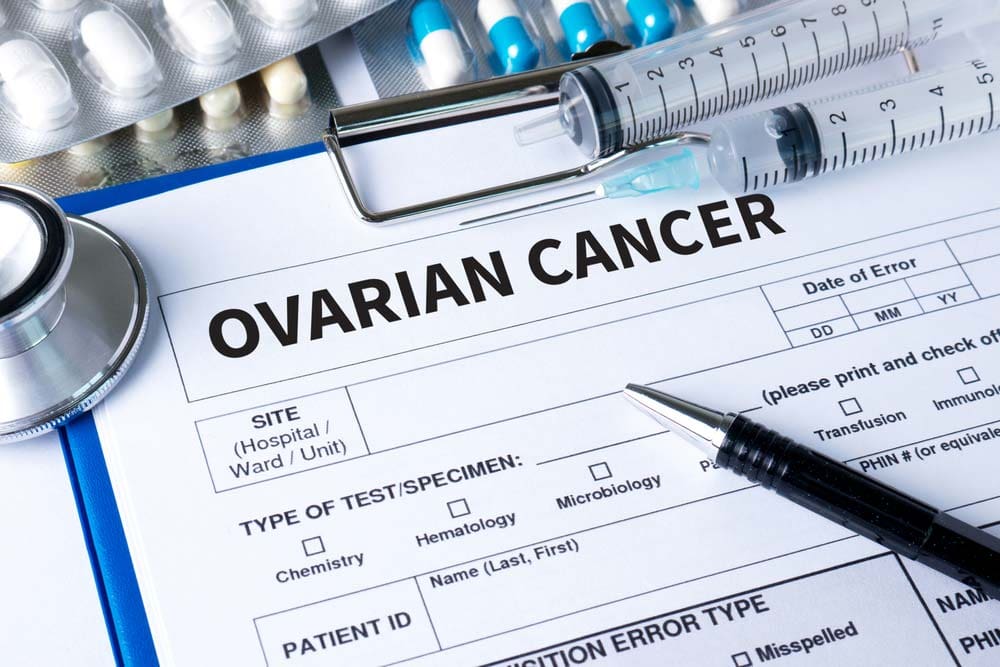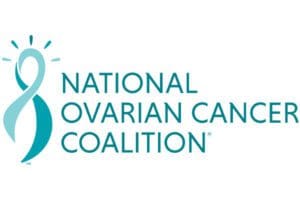A diagnosis of ovarian cancer is a devastating event. From the moment you leave your doctor’s office, life will be different. Understandably, you’ll have questions about what to expect, how to cope with the effects, and especially what life will be like moving forward. The future is uncertain, but it’s important to have as much information as possible so you can make confident decisions about your care.
What’s the History of Ovarian Cancer?
We’ve known about ovarian cancer for centuries. The earliest recorded mentions of symptoms that might be associated with ovarian cancer date back to the writings of Hippocrates, the “father of medicine,” around 400 BC.
The term “ovarian cancer” was not officially used until the 1700s, and the diagnosis was based primarily on a physician’s physical examination and the patient’s symptoms. The real breakthrough came in the 19th century with the development of ovarian surgeries. In 1809, Ephraim McDowell performed the first successful ovariotomy, removing a large ovarian tumor. Later, British gynecological surgeon Thomas Spencer Wells perfected the surgery, performing over 1,000 of these treatments by 1880.
By the late 20th century, medical advances allowed pathologists to divide ovarian cancer into various subtypes, which significantly influenced future treatment plans.
What are the Different Types of Ovarian Cancer?
Ovarian cancer is a broad term for several types of cancers that begin in the ovaries. These include:
- Epithelial ovarian cancer (EOC): This is the most common variety, accounting for about 90% of all ovarian cancers. EOC typically affects women in their 50s and 60s, but it can occur at any age. There are a few subtypes of EOC, including serous, mucinous, endometrioid, and clear cell carcinomas. The exact prevalence rate varies by subtype, but overall, there are roughly 11 cases of EOC per 100,000 women in the U.S.
- Germ cell ovarian cancer: This rare type arises from the cells that produce eggs. It’s most common in women in their early 20s and teens. Germ cell ovarian cancers include dysgerminoma, yolk sac tumor, immature teratoma, and mixed germ cell tumor. The prevalence of this type is much lower than EOC, accounting for about 5% of all ovarian cancers.
- Stromal ovarian cancer: This type arises from the connective tissue cells that hold the ovary together and produce the hormones estrogen and progesterone. It’s usually diagnosed in women in their 50s but can occur at any age. Stromal tumors include granulosa cell tumors, thecoma-fibroma group of tumors, and Sertoli-Leydig cell tumors. These represent around 1% of ovarian cancers.
- Small cell carcinoma of the ovary: This is a serious and very rare type of ovarian cancer that typically occurs in young women, often in their teens or 20s. Its prevalence is extremely low, with only a few hundred documented cases.
- Primary peritoneal cancer: It’s not technically ovarian cancer, but primary peritoneal cancer is often included in this category because it shares many qualities with EOC and is treated similarly. It occurs when cancer develops in the lining of the abdomen, which closely resembles the tissue lining the ovaries. This cancer type typically affects older women, usually those who have already gone through menopause.
It’s important to note that while age and family history can influence the risk of developing ovarian cancer, these diseases can affect anyone with ovaries, regardless of age or familial predisposition.
For more information on the different types of ovarian cancer, see our in-depth article on the topic.
What Are Common and Unique Symptoms?
Ovarian cancer symptoms are subtle and can easily be mistaken for less serious conditions, especially in the early stages. Despite its reputation as a “silent killer,” almost 50% of women diagnosed with the condition are alive five years later, according to research published by the Surveillance, Epidemiology and End Results (SEER) Program of the National Cancer Institute.
Common symptoms include bloating, pelvic or abdominal pain, difficulty eating or feeling full quickly, and urinary symptoms such as urgency or frequency.
However, there are a few unique symptoms that set ovarian cancer apart. For instance, a sudden accumulation of fluid in the abdomen (ascites) or unexplained weight loss can signal ovarian cancer.
Postmenopausal women may experience vaginal bleeding, a symptom not common in premenopausal women. If a woman starts experiencing this symptom and it persists for several weeks, occurring more than 12 times a month, she should talk to her doctor as soon as possible.
How Are Organs Affected?
Ovarian cancer starts in the ovaries but can spread to nearby organs if not detected early. Other parts of the reproductive system including the fallopian tubes, uterus, and lining of the abdomen (peritoneum) are usually the first to be affected.
Over time, cancerous cells can invade the bladder and rectum, and in the advanced stages, may reach as far as the liver and lungs through the lymphatic system or bloodstream.
This widespread effect not only complicates treatment but may significantly impact a woman’s overall health and quality of life.
What’s the Difference Between Prognosis and Diagnosis?
If you or a loved one are experiencing ovarian cancer symptoms, it’s important to see a doctor immediately to either rule it out or be diagnosed so you can decide on a treatment plan.
Diagnosis is the identification of a disease or condition. When diagnosing ovarian cancer, doctors will usually use a combination of imaging studies, blood tests, and tissue biopsies. Don’t be afraid to get a second (or third) opinion at this stage.
Prognosis refers to the likely outcome of the disease once it’s been diagnosed. Your doctor will consider the type and stage of the cancer, your overall health, and how well the cancer responds to treatment. Your prognosis will help determine what course your treatment will take.
Cancer prognoses vary widely from person to person. Again, don’t hesitate to get a second opinion about your situation before making decisions about treatment or lifestyle changes.
What Are the Stages of Ovarian Cancer?
Staging is a way of describing the size of cancer and how far it has spread. Ovarian cancer has four primary stages:
- Stage I: Cancer is found in one or both ovaries.
- Stage II: Cancer has spread to other parts of the pelvis.
- Stage III: Cancer has spread to the abdominal cavity or lymph nodes.
- Stage IV: Cancer has spread to distant sites within the body, like the liver or lungs.
These stages are divided into sub-stages based on how much the cancer has spread and the size of the tumors. As the stage number increases, the favorability of the prognosis decreases. This applies to all cancers, not just ovarian cancer.
What Treatments are Typically Prescribed for Ovarian Cancer?
When you’re diagnosed with ovarian cancer, your doctor will likely want to take a multidisciplinary approach to your treatment. Meaning, she may prescribe a combination of surgery, chemotherapy, targeted therapy, radiation therapy, and hormone therapy.
It all depends on your unique situation, including the type and stage of the cancer, your general health, and even your personal preferences.
Here’s a brief overview of each treatment type:
- Surgery: This is by far the most common treatment. With surgery, the goal is to remove as much of the cancer as possible. This can involve removing one or both ovaries, the fallopian tubes, and the uterus (a procedure known as a hysterectomy). In some cases, nearby lymph nodes and a fold of fatty abdominal tissue (omentum) are also removed.
- Chemotherapy: Chemo involves using drugs to kill cancer cells or stop them from growing. Chemotherapy is often given after surgery to kill any cancer cells that may have been left behind, but it can also be given prior to surgery to shrink tumors.
- Targeted therapy: This is a newer type of cancer treatment that uses drugs or other substances to identify and attack specific cancer cells. For example, Bevacizumab (Avastin) targets the blood vessels that supply the tumor with oxygen and nutrients, while PARP inhibitors like Olaparib (Lynparza) exploit the DNA repair weakness in some ovarian cancers.
- Radiation therapy: While not commonly used in ovarian cancer, radiation therapy uses high-energy X-rays or other types of radiation to kill cancer cells or stop them from growing. It’s typically used for palliative care or for certain types of ovarian cancers.
- Hormone therapy: This involves using hormones or hormone-blocking drugs to fight cancer. It’s not a standard treatment for ovarian cancer, but it’s sometimes used in certain types of ovarian cancer, such as low-grade serous carcinoma or recurrent ovarian cancer.
Beyond these treatments, the future is looking hopeful as several new, cutting-edge treatments continue to be developed. Researchers are studying immunotherapy as an option, which uses the body’s immune system to fight cancer. CAR-T cell therapy, for example, involves modifying a patient’s own immune cells to recognize and attack cancer cells.
Clinical trials are also underway to explore the benefits of heated intraperitoneal chemotherapy (HIPEC), a highly concentrated, heated chemotherapy treatment that’s delivered directly to the abdomen during surgery.
These are all exciting advancements, but more research is being done to learn about their effectiveness and safety for widespread use in ovarian cancer treatment.
What Support Organizations Exist for People with Ovarian Cancer
There are numerous American organizations, support groups, and NGOs dedicated to providing support and resources for those affected by ovarian cancer. Some of them include:
- National Ovarian Cancer Coalition (NOCC): Provides support, education, and hope for people affected by ovarian cancer. They offer a range of resources including community outreach, early awareness education, and a strong support network.
- Ovarian Cancer Research Alliance (OCRA): OCRA funds research, advocates for patients, and supports people affected by ovarian cancer. They also provide comprehensive disease information and a supportive online community.
- American Cancer Society (ACS): The ACS provides a wealth of resources for ovarian cancer patients, including treatment information, support groups, and help with finding financial resources.
- FORCE (Facing Our Risk of Cancer Empowered): This organization is dedicated to improving the lives of people and families affected by hereditary breast, ovarian, and related cancers. They provide resources for understanding genetic testing and risk management.
- SHARE Cancer Support: Offers supportive communities for women with ovarian or breast cancer, providing services in both English and Spanish. They conduct webinars, support groups, and educational programs.
- Foundation for Women’s Cancer: Offers resources like educational materials on gynecologic cancers, survivor stories, and webinars.
For reliable online resources, consider the following:
- Cancer.Net: This patient information website from the American Society of Clinical Oncology provides timely, oncologist-approved information to help patients and families make informed healthcare decisions.
- MedlinePlus: A service of the National Library of Medicine, MedlinePlus offers up-to-date information about diseases, conditions, and wellness issues, including ovarian cancer.
- National Cancer Institute (NCI): The NCI site offers comprehensive information about cancer diagnosis, treatment, and prevention.
Online resources can provide valuable information, but don’t rely on them over professional medical advice. Always consult with your doctor or healthcare team before making decisions about your health and well-being.
The Link Between Talcum Powder and Ovarian Cancer
In recent years, a significant health concern has been raised regarding the potential link between talcum powder usage and ovarian cancer.
Talc-based products, especially products like baby powder, were a common household item for decades. Millions of people have used these products because they believed they were safe. But several studies suggest that when used in the genital area, talc particles could travel to the uterus and fallopian tubes, embedding themselves in the ovaries, leading to inflammation and potentially causing cancer.
A wave of lawsuits followed as victims claimed manufacturers, most notably Johnson & Johnson, failed to warn users of these potential risks. In 2020, the pharmaceutical giant stopped selling its baby powder in the U.S and Canada, acknowledging the shift in consumer habits and a decrease in demand due to misinformation around the safety of the product.
Like you, we were shocked and outraged to learn about the potential link between Johnson & Johnson baby powder and ovarian cancer. We were just as disturbed by how long it took the company to act on protecting its customers. That’s why Join the Many is working to provide support, education, and community for those impacted by this negligence.
Our team will review your case at no cost and, in just a few minutes, we can determine if you may qualify for a settlement from Johnson & Johnson. We’ll even do the work of finding a trusted legal team who can fight on your behalf, and you’ll pay no legal fees unless you’re awarded compensation.
If you or someone you love have been touched by ovarian cancer and suspect talc baby powder is to blame, you don’t have to shoulder this burden alone. Add your voice to the many and help us hold them accountable.







